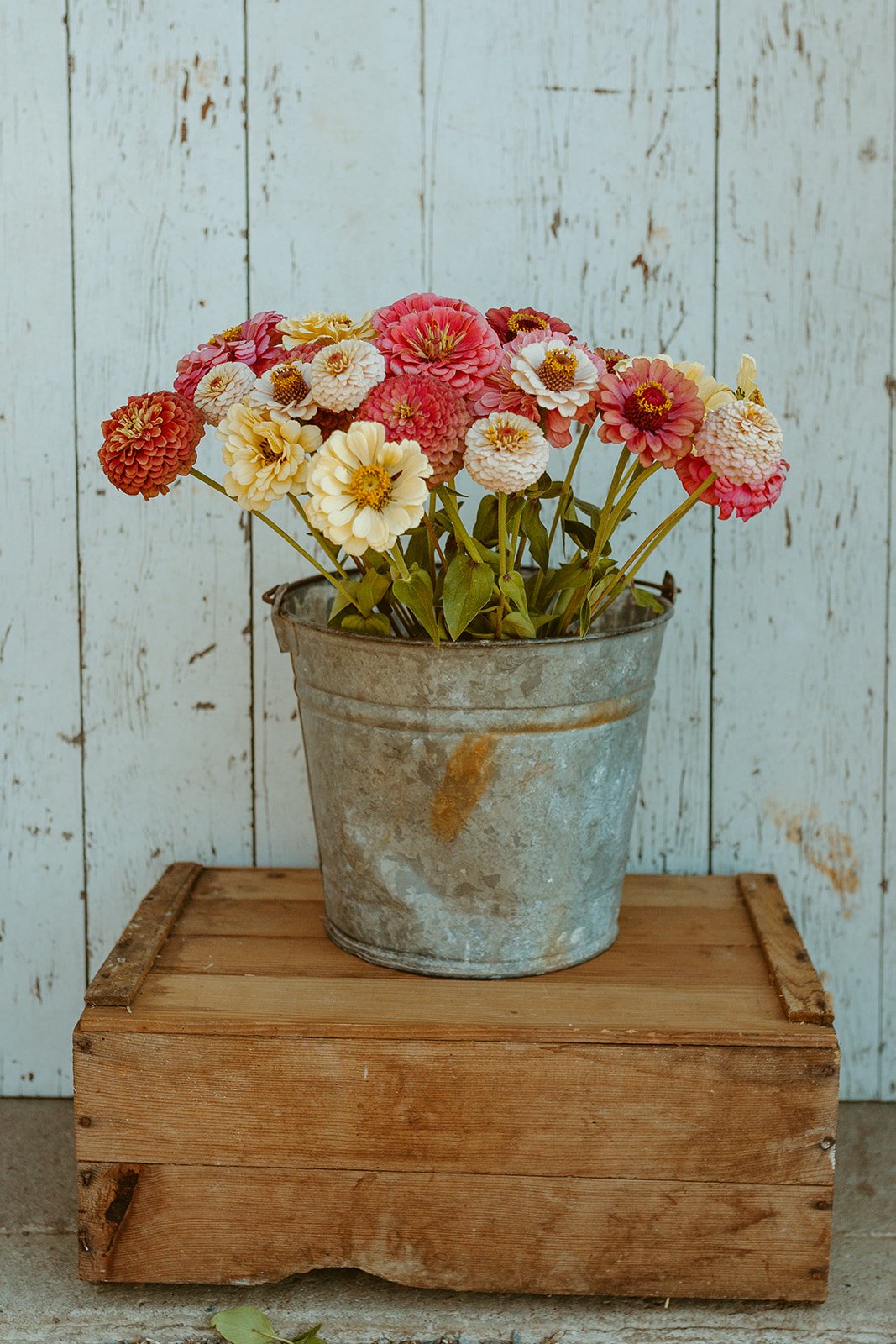Photo by Rylea Foehl Photography
Whether you’re sadly surveying the a empty garden that has yet to have a seed planted in it, or mourning all the seedlings that lost their lives to slugs/bugs/the neighbor cat’s digging/extreme weather, it can feel defeating to arrive at the peak months of summer and not see any hope of bloom in your cut flower garden.
BUT that does not mean all is lost: even in the middle of summer, it’s still possible to start your cut flower.
It just comes down to two simple things: getting the timing right and choosing the right seeds to sow.
Don’t give up on that dream of buckets full of blooms just yet!
In this blog post, we'll explore how you can determine the last possible date to sow seeds, ensuring a bountiful harvest and a beautiful garden. Let's dive in!
Step 1: Identify Your Average First Frost Date
To determine the last possible date for planting seeds, we first need to know when the first frost typically arrives in your area. The first frost marks the end of the growing season, as it brings colder temperatures that kill tender annuals. Finding your last frost date is as simple as typing in your zip code in any frost date calculator. We particularly love this frost date calculator because it identifies not just your first possible date of light frost, but also the exact probabilities of when that frost date will hit.
Step 2: Determine how many days are left until your first frost date
First, calculate how many days there are left from today’s date until your first frost date. (No counting required, thanks to Siri.) In our case, there are 88 growing days remaining until we have a 20% chance of frost. There are lots of seeds that can be sown right now that will reach maturity before 88 days! And if you’re willing to gamble a little, you can “play the odds” and potentially add even more growing time to your season. For example, in zone 8, frost is 50% likely by October 22. If you’re willing to roll the dice with your last frost date, you can “stretch” out the season for tender annuals by as much as two weeks. (We’re willing to risk it a bit if it means more flowers!) If we opted to gamble on 50% chance of frost, that would mean there are still 100 growing days left in our growing season!
Step 2: Chose the right plants!
Once you know how many days are remaining in your growing season, you just need to select plants that will mature within the time remaining in your growing zone. You’ll want to ONLY select plants that are able to reach maturity before your last frost date.
It’s easy to determine which seeds will qualify for late summer planting by identifying how many days they need to grow to reach maturity. You can find “Days to Maturity” on the back of most seed packets. Or, you’ll find it listed for every cut flower variety in the seed description of the supplier’s catalog. (We personally LOVE Johnny’s Seeds as a source for great growing information on hundreds of varieties of cut flowers. )
A few of the fastest growing flowers include:
Calendula (matures in 50-55 days)
Bachelor Button (matures in 65-75 days)
Zinnia (matures in 75-85 days)
Sunflower (branching varieties mature in 55-65 days, while the ProCut Series matures in matures in 50-60 days)
Cosmos (matures in 75-90 days)
Borage (matures in 50-60 days)
A few great fast maturing foliages:
Persian Cress (matures in 65-75 days)
Mrs. Burns Lemon Basil (matures in 60 days)
Bouquet Dill (matures to leafy stage in 40-45 days and see
Ornamental grass “Green Drops” (matures in 65-75 days)
Step 4: Plant immediately
You STILL can have a beautiful cutting garden this year.
Even if you didn’t plant a single seed this spring.
Even if the slugs decimated your seedlings.
Even if the dog trampled an entire section of your garden.
THERE. STILL. IS. TIME.
But only if you hop right out and get planting right away. The best advice we ever heard about growing a successful cut flower garden?
Just put the seed in the ground.
That’s it. Don’t overthink it. Just get those seeds in the ground, keep them watered consistently and get ready to harvest an abundance of blooms.
By sowing seeds later in the season, you may discover new possibilities and surprising successes. Gardening is both an art and a science, and sometimes it's about learning through trial and error. Don't be afraid to experiment and push the limits of planting dates. While it's important to consider guidelines and recommendations, there's no one-size-fits-all approach to gardening.Embrace the joy of exploration-even if your garden doesn’t produce all of the blooms that you were hoping for this year, you’ll learn so much in the process that will contribute to the joy and success of next year’s garden.


